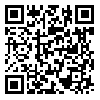BibTeX | RIS | EndNote | Medlars | ProCite | Reference Manager | RefWorks
Send citation to:
URL: http://jdm.tums.ac.ir/article-1-551-en.html
One of the major goals of periradicular surgery is to create a good apical sea! at the apex. This is done by sectioning of 2 to 3mm from the apex, preparation of a class I cavity and filling with a biocompatible material.The purpose of this in vitro study was to determine whether ultrasonic units used for root end preparations could change the surface & structure of resected root ends, as competed to common methods of retropreparation. Eighty-five extracted single rooted teeth were divided into five similar groups. Then instrumented and filled with lateral condensation method. Then three millimeter of apex was resected, retropreparaiions in two groups were done with low speed handpiece and round V) ^ur and cavities in two other groups prepared with the highest power of dentspiay ultrasonic unit with TFI-10 tip and in one other group prepared with the highest power of neo sonic ultrasonic unit with diamond coated CT-1 retro tip.Following root resection and retropreparation the surface of resected root ends were examined for the presence of any cracks or structural changes on the surface of resected root ends with stereo microscope 50x.The results of this study showed thai high power settings of ultrasonic units can increase the potential of crack formation on resected root surfaces. In conclusion it is better to use low power setting of ultrasonic for retropreparation.
| Rights and Permissions | |
 |
This work is licensed under a Creative Commons Attribution-NonCommercial 4.0 International License. |




